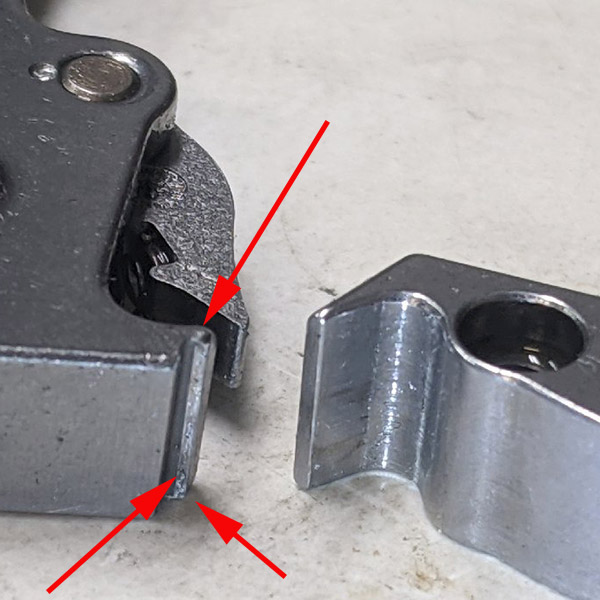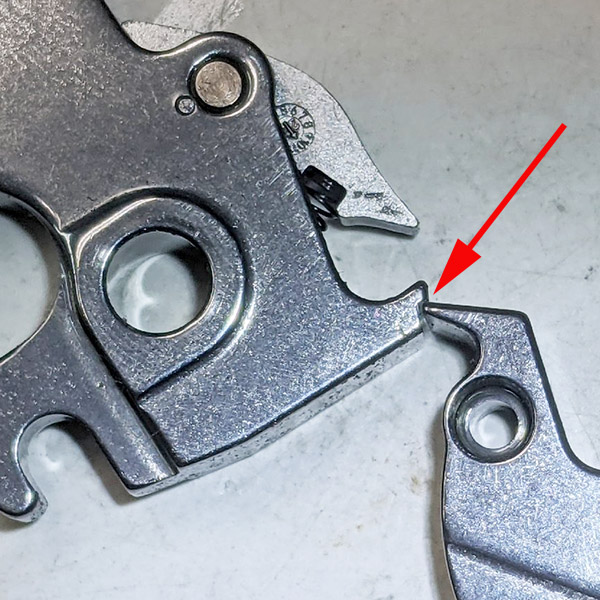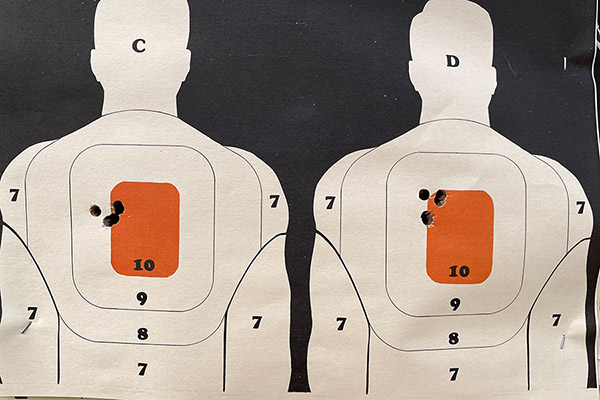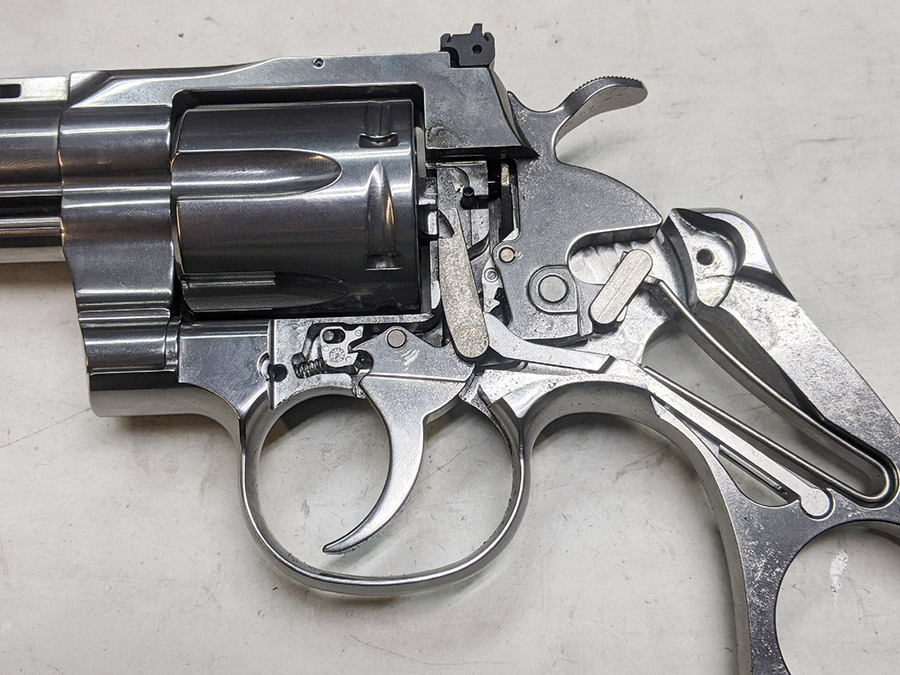As I mentioned in a recent blog, good buddy TJ (of TJ’s Custom Gunworks) reworked the trigger on my Colt Python. The original single action trigger had a lot of creep, it was heavy, and what surprised me most of all was that it actually cocked the hammer another few degrees before it released. I was getting a little double action when firing single action.
That bothered me enough to call my contact at Colt Manufacturing, and I think he was surprised when heard about it, too. He checked with his engineering department, and the word came back: They had to do that to meet the California and Massachusetts drop test requirements. I checked the California regulation and it requires dropping a loaded, cocked revolver from a height of 1 meter six times on a concrete surface without the gun firing inadvertently. Think about that. Dropping a loaded and cocked revolver, a .357 Magnum, onto a concrete floor. Six times.
Me? I’m going with an alternative approach. I’m not going to drop my loaded, cocked, .357 Magnum revolver on a concrete surface even once. It’s kind of a common sense approach, one that the politicians in California and Massachusetts apparently think we can’t be trusted to take.
A loaded revolver. Cocked. Dropped. Six times. Onto a concrete floor. What were they thinking?
I’m not one to to argue Darwinism versus Divine Creation (we don’t do politics or religion here on ExNotes), but here’s a thought. Maybe someone who drops a cocked, loaded, .357 Magnum revolver on a concrete surface six times, well, maybe Darwin was on to something. Maybe that person needs to be culled from the gene pool. Before you get your shorts in a knot, though, remember my preface: It’s just a thought.
Anyway, back to the main attraction, and that’s the trigger job TJ did on the new Python. TJ took photos of the Python’s internals (the complete parts interface is shown above in the large photo). The photo below shows what was causing the trigger creep and the hammer movement during a single action trigger pull:

That’s the hammer on the left, and the trigger on the right. You’ll notice that the hammer’s sear area (denoted by the red arrows) is kind of rough and it contains a hooked ledge of sorts. That’s what was rotating the hammer back a few more degrees when the trigger was actuated in the single action mode.
TJ modified the sear to eliminate the hooked ledge and create the angles and surface finish the Python trigger-to-hammer interface deserves. That’s what you see below.

Before he improved the sear interface, the Python’s double action trigger pull was 9 1/2 lbs; it is now 9 lbs. The single action trigger pull was a very creepy 5 1/2 lbs; now there is no perceptible trigger or hammer movement before the hammer is released and the trigger breaks at a very clean 2 1/4 lbs. The upgrade completely changes the character of the new Python. I can’t imaging anyone buying a Python and not wanting to have the trigger cleaned up in this manner. TJ is the guy to do it.
The next big question is: Did the new trigger a make a difference in how the Python performed? Hey, you tell me. Here are two 5-shot groups shot at 50 feet with the improved trigger:

Those two groups were shot with my go-to .38 Special target load (a 148-grain wadcutter and 2.7 grains of Bullseye prepared on my Star reloader). The group on the left measures 0.680 inches; the one on the right measures 0.830 inches. Some of the .357 Magnum loads performed just as well. I’ll share all my Python load testing results in a near-term future blog. I didn’t adjust the sights during my load testing because I’d be moving them with each new load; I’ll zero the gun when I’ve selected the load I want for the Python. I am a happy camper; these are phenomenally good results.
You might be wondering about now why you’d need a trigger job on a $1500 handgun. Folks, this isn’t Colt’s fault. They’re doing what they have to in order to meet a requirement imposed by people who don’t understand what they are doing. Don’t get upset with Colt. Do the right thing and vote.
If you have a Python and you’re not happy with the trigger, take a look at TJ’s Custom Gunworks and drop TJ a note. Trust me on this: You’ll be glad you did.
More Tales of the Gun!
Never miss an ExNotes blog!
More gun porn? Check this out!


Checked my Trooper MKIII to se if it did the same thing. Releaved no problem. Smooth release of the hammer. Dont have a gauge for it but it feel like 3-. Great article.
I’d never seen it on any other double action revolver before and I made that comment to TJ; he told me that he has seen it on other guns. That Trooper Mk III is a nice gun; I have the .22 LR version and it is one of the most accurate handguns I’ve ever owned. We have a blog on it that will appear within the next few weeks.
Thanks for commenting, David.
When a lot of people discovered a new interest in handgun ownership during the Obama administration there was a spate of accidental discharge incidents from people dropping their guns in supermarkets and the like. I think you may be onto something with your Darwin solution, but we’d have to find a way to make sure the barrel was oriented in the right direction. 😉
You know, you have a good point regarding the large number of newcomers to the firearms world. When I was a youngster, most folks had guns in their home and were trained by their fathers, uncles, or grandparents. Also, a lot of people (a much higher percentage than today) were in the military. We’ve lost that. We recently had a negligent discharge resulting in a fatality at a local indoor pistol range (not one I go to), and if I had to guess, I would guess a lack of familiarity with basic gun safety protocols played a role. The problem is how do you control it? I believe new gun legislation is the classic slippery slope and I absolutely distrust the government to get it right. Having said that, I would much rather see some form of mandatory minimal required training in gun safety instead of the government telling us what kinds of guns we can own, how many rounds a magazine can contain, how often we are allowed to buy a new gun, etc. The folks making the laws are legislating things they do not understand. But what do I know…